- News
- Reviews
- Bikes
- Accessories
- Accessories - misc
- Computer mounts
- Bags
- Bar ends
- Bike bags & cases
- Bottle cages
- Bottles
- Cameras
- Car racks
- Child seats
- Computers
- Glasses
- GPS units
- Helmets
- Lights - front
- Lights - rear
- Lights - sets
- Locks
- Mirrors
- Mudguards
- Racks
- Pumps & CO2 inflators
- Puncture kits
- Reflectives
- Smart watches
- Stands and racks
- Trailers
- Clothing
- Components
- Bar tape & grips
- Bottom brackets
- Brake & gear cables
- Brake & STI levers
- Brake pads & spares
- Brakes
- Cassettes & freewheels
- Chains
- Chainsets & chainrings
- Derailleurs - front
- Derailleurs - rear
- Forks
- Gear levers & shifters
- Groupsets
- Handlebars & extensions
- Headsets
- Hubs
- Inner tubes
- Pedals
- Quick releases & skewers
- Saddles
- Seatposts
- Stems
- Wheels
- Tyres
- Health, fitness and nutrition
- Tools and workshop
- Miscellaneous
- Cross country mountain bikes
- Tubeless valves
- Buyers Guides
- Features
- Forum
- Recommends
- Podcast
news
 Giro d'Italia 2013 route map final
Giro d'Italia 2013 route map finalGiro d'Italia 2013 Preview: Our guide to all 21 stages
For the first time in half a century, Naples will play host to the start of the Giro d’Italia this Saturday and as ever there is huge anticipation for the year’s first Grand Tour – bolstered in the UK this time round by the presence of Sir Bradley Wiggins. As if that weren't exciting enough, don't forget there's over £1,500 worth of prizes up for grabs during the Giro in our Fantasy Cycling competition, including a Bianchi Via Nirone bike.
Wiggins aims to add the maglia rosa to the maillot jaune he won in the Tour de France last summer, and we’ll be running the rule over his chances and those of the main contenders such as Vincenzo Nibali and Ivan Basso to succeed Garmin-Sharp’s Ryder Hesjedal as champion later this week, but in the meantime here is our stage-by-stage guide.
With the 2012 race starting in Denmark and next year's Grande Partenza taking place in Ireland, organisers have given a strong southern Italian focus to this year’s edition, with the opening week played out in the Mezzogiorno.
Then it’s back to familiar territory in the north for the final fortnight, with some cracking Alpine stages including an excursion into the France to tackle the Galibier as well as expected fireworks in the Dolomites ahead of the finish in Brescia.
You can find high-resolution versions of all stage maps and profiles on the Giro d'Italia website, as well as a link to download the race's Garibaldi - the official roadbook; be warned, it's a huge file.
Stage 1
Saturday 4 May
Napoli – Napoli 130km (flat)
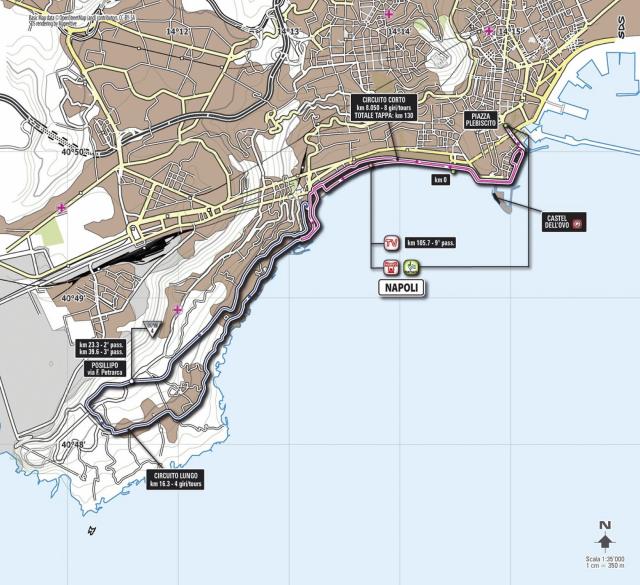
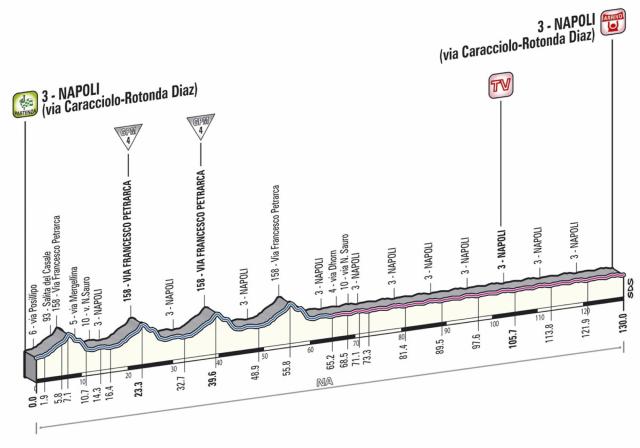

The race opens with a 130km dash along the Bay of Naples, four laps of a 16.3km circuit taking the riders up to Posillipo – with two sets of KOM points on offer – before eight laps of a shorter, 8km circuit. Original plans were for ten laps of that tougher circuit, but the changed route make a sprint finish a certainty.
Breakaway riders will have hopes of grabbing the mountains jersey for a couple of days, but none of staying away. Mark Cavendish has worn the maglia rosa before, but he’s never taken it by winning a sprint; there’s even talk of Omega Pharma-Quick Step may bring in Alessandro Petacchi to bolster his leadout.
Local knowledge: Colourful, chaotic and full of history, bringing the start of the Giro here is part of a wider strategy aimed at achieving a Barcelona-style transformation of the fortunes of what remains one of Europe’s great cities. The seafront setting, with Vesuvius looming to the east, will be spectacular.
Stage 2
Sunday 5 May
Ischia – Forio 17.4km (team time trial)
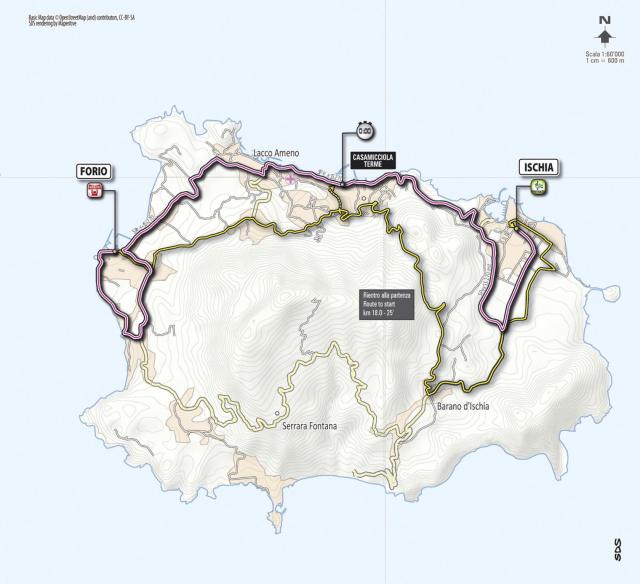
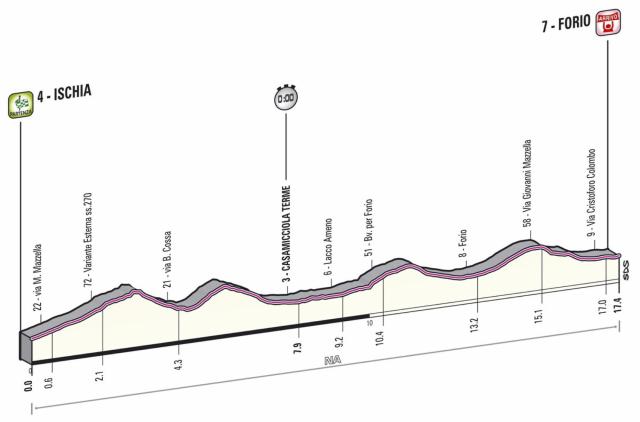
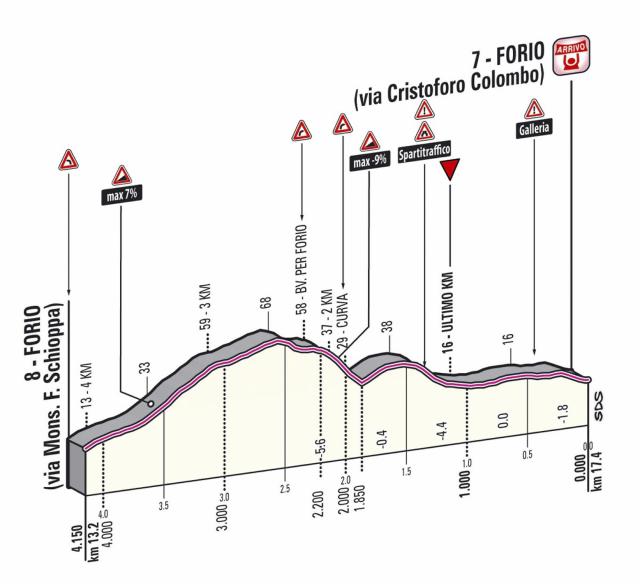
Today is only the second visit the Giro has made to Ischia, Italy’s third most populous island; the previous one coming in 1959, when Sicilian Tonino Catalano – a one-time ice-cream seller, who had only turned pro the previous year, aged 26 – upset the form book to win a 31km individual time trial.
It’s unlikely there will be a surprise winner in today’s team version. The climbs are undulating rather than tough, but the technical aspects – some tight bends and the possibility of wind – will as ever favour the better-drilled teams. The top ones are likely to be separated by a handful of seconds by the end.
Local knowledge: Ischia’s main industry nowadays is tourism, but not all foreign visitors were welcomed in the past – it’s been raided by Ostrogoths, Saracens, and Barbary pirates, among others. Happily, modern visitors are more interested in Ischia’s thermal springs and mud baths than seizing locals to sell into slavery.
Stage 3
Monday 6 May
Sorrento – Marina di Ascea 222km (medium mountain)



The race’s final day in Campania takes it from Sorrento along the spectacular Amalfi Coast, with plenty of twists, turns and small climbs before the road flattens out past Salerno, but that will provide only temporary respite with a couple of tough climbs in the final third of the stage.
The first of those is a late addition, replacing another climb due to concerns over safety on the descent – but word is, it will be harder to get up. There’s a twisting downhill ride to the finish in the seaside resort of Marina di Ascea, likely to be contested by a select group with every chance the maglia rosa will change hands.
Local knowledge: A major tourist destination, today’s stage start town is also the home of limoncello – made throughout Campania, purists maintain that it must be produced from Sorrento lemons. There’s no great secret to the recipe – add grain alcohol and sugar – and trust us, home-made versions can knock your socks off.
Stage 4
Tuesday 7 May
Policastro Bussentino – Serra San Bruno 246km (medium mountain)

EMBEDPROFILE


The Giro heads into Calabria and the southernmost point of the 2013 race, on the second longest stage this year. It’s reasonably flat for the first 190km as the race hugs the coast, where as ever the wind blowing in off the Tyrrhenian Sea could be an issue.
Once the route swings inland, though, and heads towards what is in effect the first summit finish of the race – there’s a 5km, mainly downhill, section after the peak of Croce Ferrrata itself – it’s likely to be a smallish group fighting it out for the stage, and one that includes the men with an eye on winning the overall.
Local knowledge: Today’s arrival town is named for St Bruno of Cologne, founder of the Carthusian order of monks and one of the great clerics of the Middle Ages, who died here in 1101. The town grew up around the Certosa – in English, Charterhouse – that he founded in 1095.
Stage 5
Wednesday 8 May
Cosenza – Matera 203km (flat)
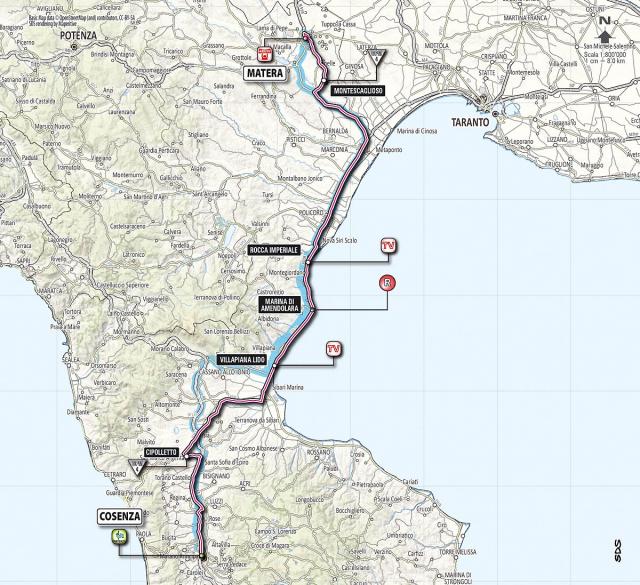


The race runs along Italy’s instep and into the Basilicata region today, including around 125km of near pan-flat riding along the Ionian coast. Again there are a couple of ascents to be tackled towards the end, although not as long or as high as those in the past couple of days.
It’s an intriguing stage that could go either way – some teams will be fighting to keep the race together to get their sprinters over the top of those late climbs and keep them in contention, while others will send men up the road to ensure that doesn’t happen.
Local knowledge: Exiled to Basilicata by the Fascists, Carlo Levi’s memoir, Christ Stopped at Eboli, vividly depicted the extreme poverty his sister found in Matera’s sassi – ancient, one-room dwellings; a UNESCO world heritage site, today they house shops, bars, restaurants and even a boutique hotel.
Stage 6
Thursday 9 May
Mola di Bari – Margherita di Savoia 169km flat

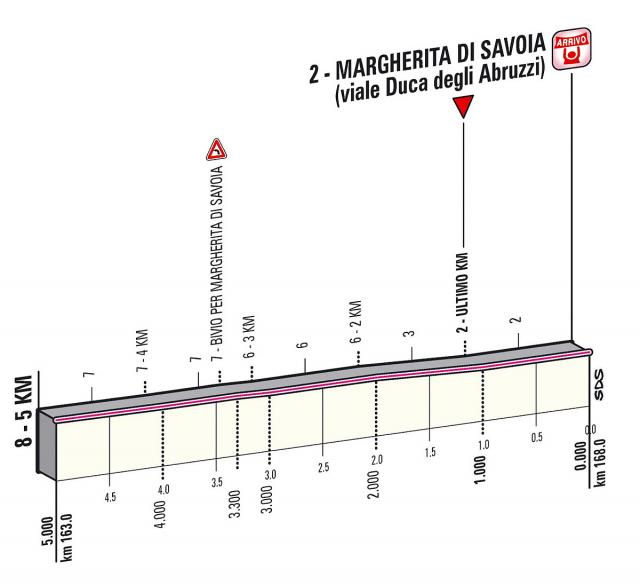
Another day, another sea to tick off – this one the Adriatic as the race starts its journey north, though we’re still more than a fortnight from the conclusion in Brescia, with the last 40km or so, including two laps of a 16km closing circuit that is pretty much as flat as it gets.
If yesterday’s stage didn’t end in a bunch finish, the sprinters will be desperate to make sure today’s does – even this early, they won’t have too many other opportunities. The final 3km are more or less straight, but the map of the closing circuit suggests some tight corners will have to be negotiated first.
Local knowledge: Formerly known as Saline di Barletta – it is home to Europe’s largest saltworks, bound to feature in the aerial shots of the final kilometres – the arrival town was renamed in 1879 in honour of the recently unified Italy’s first queen, best remembered nowadays for the pizza that also bears her name.
Stage 7
Friday 10 May
San Salvo – Pescara 177km (medium mountain)

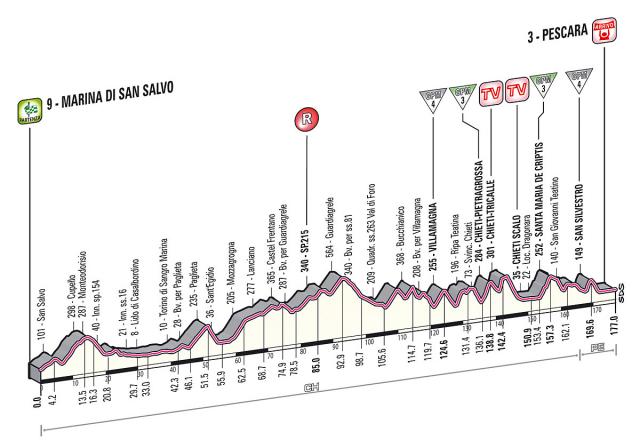

The final week comes to a close with what could be a terrific stage, with the second half featuring a saw-toothed profile in the Apennine Mountains inland from Pescara, and plenty of tough climbs – the intermediate sprint at Chieti-Tricalle sits atop one which ramps up to 19 per cent.
With a big day for the GC looming tomorrow, it could be a nervous day in the peloton – a puncture or flat at the wrong time for an overall contender could see rival teams put the hammer down. There’s likely to be attacks throughout, and it could be a day for an attack over one of those sharp ascents to stick.
Local knowledge: Marina di San Salvo is a first-time stage town, but Pescara has hosted stage finishes on 17 previous occasions – the last in 2001, when Lotto’s Rik Verbrugghe, now a sports director at BMC Racing, took the maglia rosa following a 7km Prologue.
Stage 8
Saturday 11 May
Gabicce Mare – Saltara 54.8km (individual time trial)



This is a day when Bradley Wiggins will be looking to take some big time out of his rivals – of those expected to be the main contenders, if the Team Sky man is on top form, only the likes of Ryder Hesjedal and Cadel Evans are likely to be able to avoid losing two minutes or more to him. Some risk losing much more.
The parcours is a technical one, on rolling roads with plenty of twists and turns in the first half as the route skirts the coast before heading inland after the intermediate time check at Pesaro. There’s a nasty climb at the end, too – the final kilometre has an average gradient of 9 per cent, and hits 13 per cent.
Local knowledge: For 33 years now, today’s stage start town of Gabicce Mare has hosted a week-long international cyclo-tourist festival each April, but today’s stage will be no picnic for the riders. Whoever wins in Saltara, a centre of hat-making until after the Second World War, will have earned a ‘chapeau!’
Stage 9
Sunday 12 May
San Sepolcro – Florence 170km (medium mountain)



With that time trial yesterday, a rest day tomorrow and a couple of big climbs dumped in the middle of today’s stage, this could be another one for a break to get clear and stay away – worth bearing in mind, then, that Movistar’s Giovanni Visconti now lives in these parts.
While today’s stage approaches Florence from the opposite direction to the course that will feature in the UCI Road World Championships in September, it does include the key section of the circuit from Fiesole down into the Tuscan capital that will help determine the winner of the rainbow jersey.
Local knowledge: Initial plans were to include a full lap of the Worlds’ closing circuit, but with resurfacing works continuing, that proved impossible. However, with the race crossing the Arno to finish at Piazzale Michelangelo – home to perhaps the most iconic view of Florence – some stunning shots are guaranteed.
Stage 10
Tuesday 14 May
Cordenons – Altopiano del Montasio 167km (high mountain)
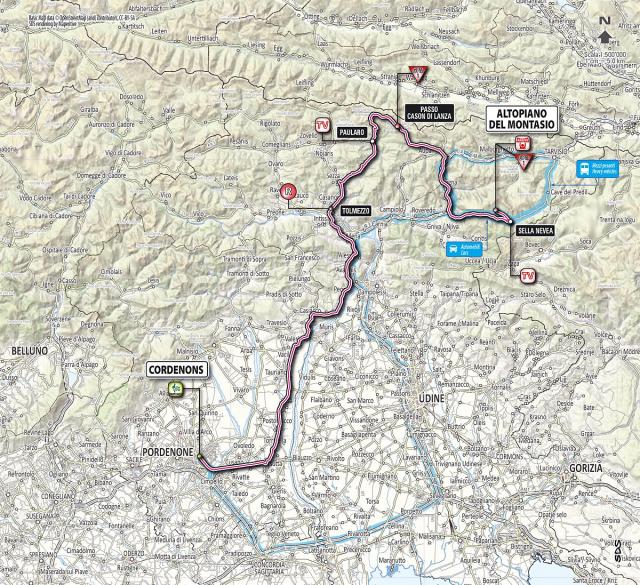


The race heads towards its halfway point with the first big mountain stage, and with Saturday’s time trial likely to have opened up some big gaps at the top of the GC, some riders will be desperate to claw back any time they have lost. It should be a cracker.
The Passo Cason di Lanza, with gradients of up to 16 per cent, is likely to shred the field, and there’s then a descent of nearly 30km before the road rises up again to the finish on the Altopiano of Montasio, with a particularly tough section between 4km and 3km out, with ramps of 20 per cent.
Local knowledge: The roads of the Corsa Rosa will literally be turned pink today – recently, organisers RCS Sport offered 200 fans the chance to have their tweets about the race permanently painted on the surface of the final climb. Let us know if you are one of the lucky ones.
Stage 11
Wednesday 15 May
Tarvisio (C. del Predil) – Vajont (Erto e Casso) 182km (medium mountain)
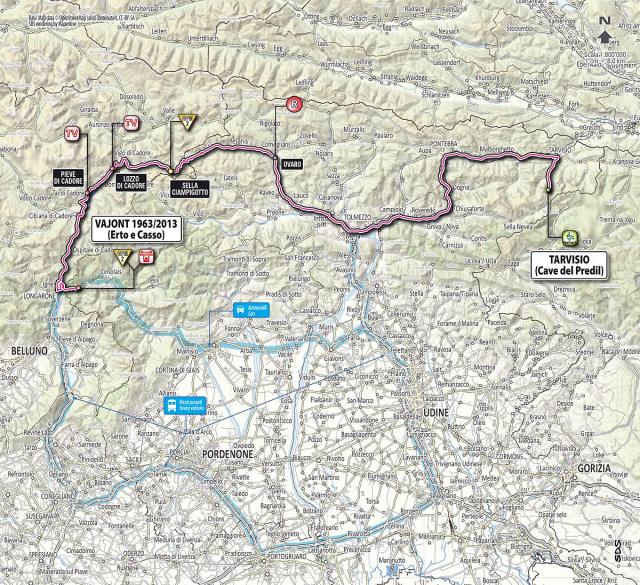
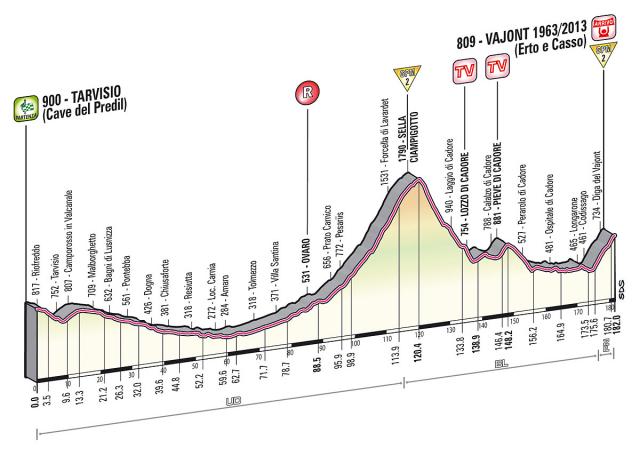

This should be a quieter day in the GC, with the riders who figure towards the top of the standings after yesterday’s stage most likely content to watch each other while a break heads up the road.
The day’s major climb, the Sella Ciampigotto, will whittle down the front group, although there’s enough time after what should be a fast descent to enable some stragglers to rejoin ahead of the final climb, which at an average of 5 per cent over the final 7km on paper presents a much easier prospect than yesterday’s.
Local knowledge: Today’s stage finish commemorates the 2,000 lives lost on 9 October 1963, when a landslide caused a wall of water 250 metres high to come over the top of the Vajont dam, obliterating several villages in the Piave valley below. Now disused, it remains the fifth highest dam ever built.
Stage 12
Thursday 16 May
Longarone – Treviso 134km (flat)


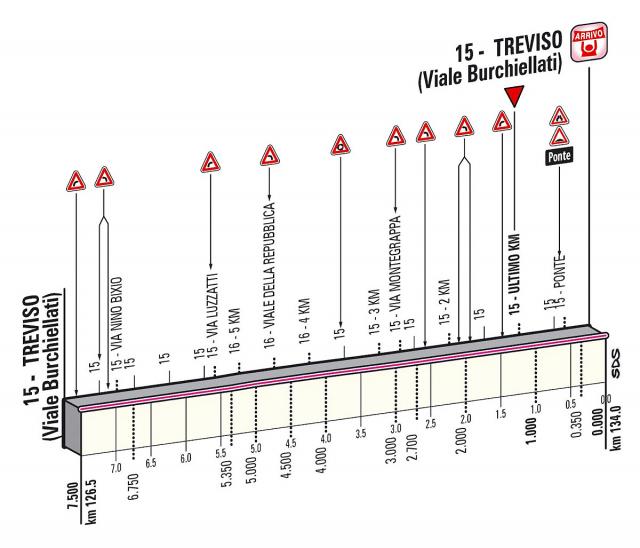
The sprinters will be itching to have a crack at this stage, their first opportunity in a week to challenge for a win – and none more so than Veneto natives Andrea Guardini, Sacha Modolo and Elia Viviani, racing in front of home fans.
Bearing that in mind, it could be a tactical stage – their respective teams, Astana, Bardiani Valvole-CSF Inox and Cannondale aren’t going to want Mark Cavendish there in the finale, and could well try and use that last climb to try and drop him. There’s still nearly 40km to chase back on, though.
Local knowledge: Treviso is also home to Pinarello, whose bikes are ridden by Movistar and Sky – though even if Sir Brad is up there on GC, with another nine days of tough racing to come, it might be premature to have the spray guns in the paint shop loaded up with pink just yet.
Stage 13
Friday 17 May
Busseto – Cherasco 254km (flat)

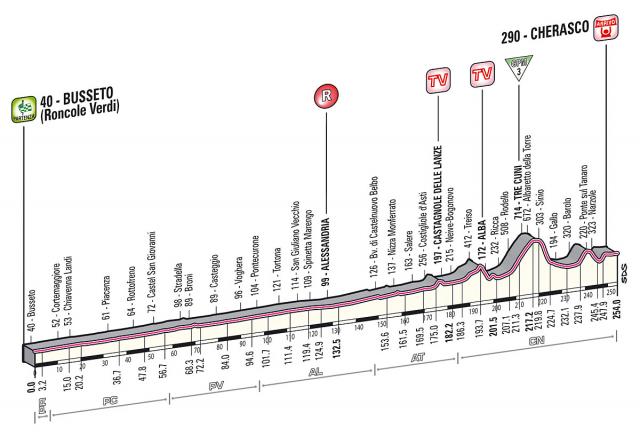

The longest stage this year, most of today’s route is the same, in reverse, as that of Stage 2 of the 2011 Giro, when Sebastian Lang of Omega Pharma-Lotto spent more than 200km on a lone break, with Lampre’s Alessandro Petacchi getting the better of then HTC Highroad rider Mark Cavendish in the sprint in Parma.
That means 175km of flat riding through the Po Valley, until the road rears up in the hills south of Asti, the most significant being the Tre Cuni; the sprinters’ teams will have to fight very hard to ensure their men are in contention at the end – after this, at most there are just two opportunities left for them in the race.
Local knowledge: Even in a country with such strong regional culinary diversity as Italy, the corner of Piedmont where today’s stage finishes has a particularly rich heritage; Alba is equally famous for truffles and Ferrero-Rocher, while Cherasco lies a little to the south of Bra, birthplace of the slow food movement.
Stage 14
Saturday 18 May
Cervere – Bardonecchia 168km (high mountain)
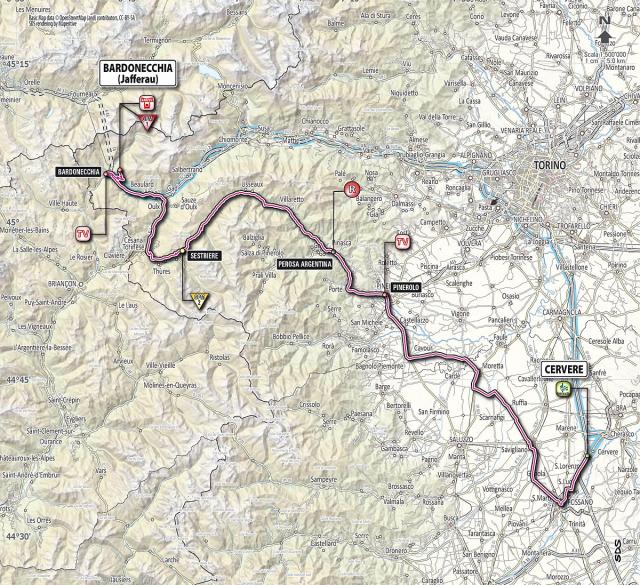
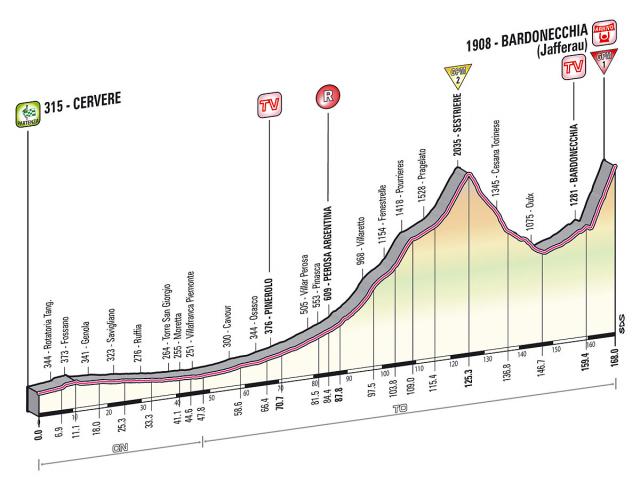

The third Saturday of the race sees it hit the Alps, with two big climbs – a long slog up to Sestriere, followed by a 1,000 metre drop in height before the road rears up again to the finish on the Jafferau. They’re by no means the toughest climbs in this year’s race, and there’s a monster stage looming tomorrow.
No-one’s going to take it easy, though. Expect some attacks from the GC hopefuls towards the top of that tough final climb of the Jafferau to try and pick up some seconds – and if one of the big names is in trouble, fireworks are guaranteed as their rivals look to maximise the advantage.
Local knowledge: Developed in the 1930s by Fiat owner Giovanni Agnelli, Sestriere now hosts major skiing events including the 2006 Winter Olympics. Less than 20km from the border, besides the Giro it also regularly welcomes the Tour de France – a certain Lance Armstrong won here in 1999.
Stage 15
Sunday 19 May
Cesana Torinese – Col du Galibier (Valloire) 149km (high mountain)
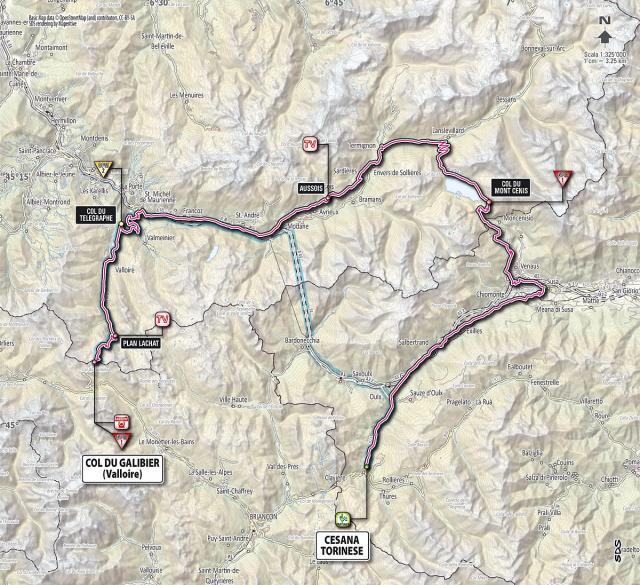


Keep the diary free today – this stage, most of it played out on French roads and including the Col du Télégraphe on the way up to the Galibier, promises to be a cracker, and with a rest day tomorrow and a transitional stage on Tuesday, the GC challengers will go all out for the win.
This is more Tour de France than Giro territory, of course, but the High Alps in mid-May can be a very different proposition to the height of summer. A fast start as the road heads down towards the foot of the climb to Mont Cenis, which marks the border, may make it difficult for a break to get away.
Local knowledge: That one-two punch of the Télégraphe and the Galibier featured on the final Friday of the 2011 Tour. Alberto Contador attacked, Pierre Rolland won on Alpe d’Huez, and Thomas Voeckler lost the maillot jaune to Andy Schleck; he’d keep it for just 24 hours before Cadel Evans overhauled him.
Stage 16
Tuesday 21 May
Valloire – Ivrea 238km (medium mountain)


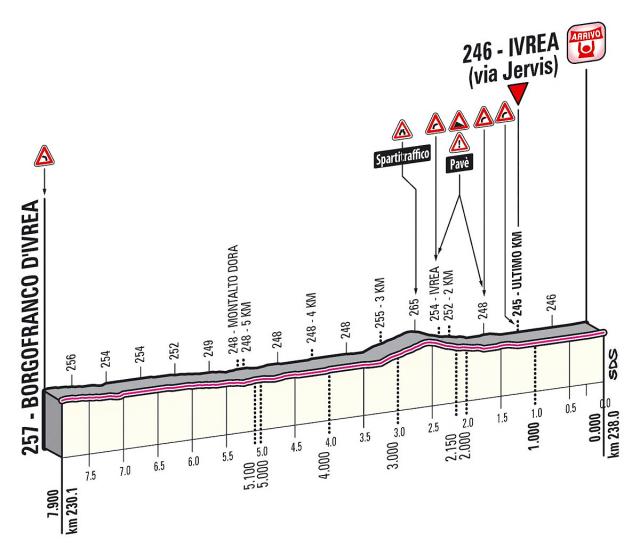
The GC battle should take a back seat for the next couple of days as the Giro resumes following the rest day, but there’s a tough start to today’s racing, with a descent from the Télégraphe followed by another climb of Mont Cenis and back into Italy.
The climb to Andrate towards the end of the stage means this isn’t a day for the sprinters, who will instead be trying to keep their legs as fresh as possible for tomorrow – if anything, it’s a stage that will be contested by the break, likely to feature men from teams that haven’t got anything out of the race to date.
Local knowledge: Ivrea was a beneficiary of Italy’s post-war “economic miracle,” booming as a result of the success of typewriter firm Olivetti, but its fortunes – and population – have waned alongside those of the company; the latest blow came in March, with a fire at a former Olivetti plant putting up to 800 jobs at risk.
Stage 17
Wednesday 22 May
Caravaggio – Vicenza 214km (flat)
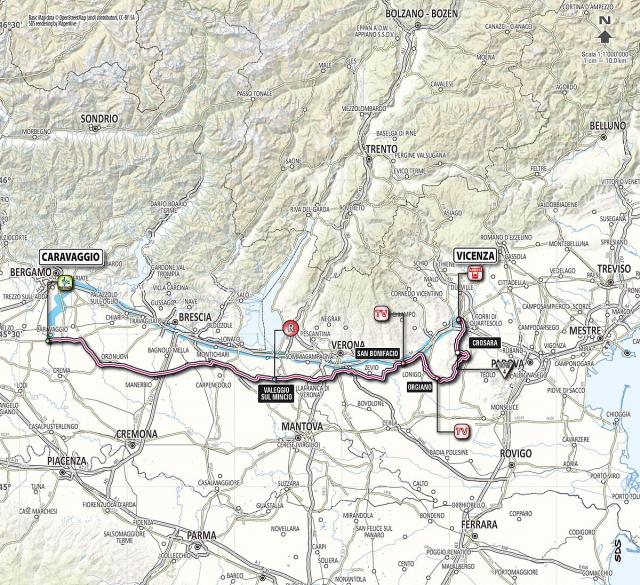

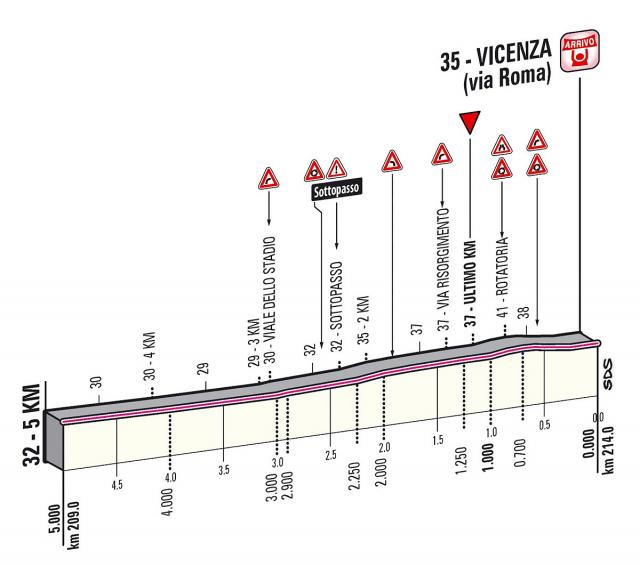
Other than the final day in Brescia, this is the last chance for the sprinters to make their mark on this year’s Giro, but again organisers have thrown in a climb towards the end that gives an opportunity for an escape to stay away, or for someone to launch a late attack.
Expect teams supplied by Campagnolo to try and get into any moves – the brand is based in Vicenza. With today’s climb coming after the intermediate sprints, if a sprinter is still in with a shout of the points classification, his team may look to reel in a break early – as Sky did at times for Mark Cavendish last year.
Local knowledge: In 1576, plague in Milan forced Fermo Merixio, in the employ of the Marquis of Caravaggio, to move his family to the town hosting today’s start. His son, Michelangelo Merisi, left Lombardy to seek fame and fortune through his painting, but met with exile and a violent death. He’s best known by the name of the town where he grew up – Caravaggio.
Stage 18
Thursday 23 May
Mori – Polsa 20.6k (mountain time trial)

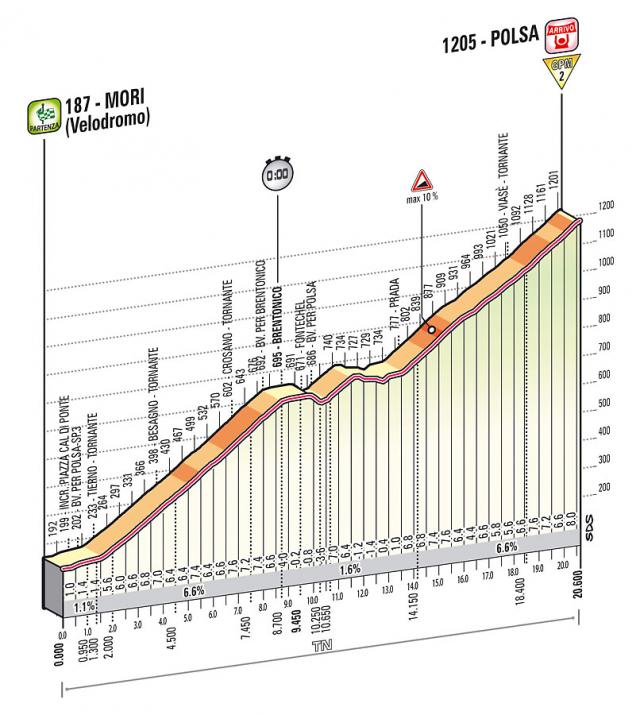

The long individual time trial earlier in the race, may have helped Bradley Wiggins make his mind up about going for the Giro this year, but this one is a different proposition, giving as much an opportunity to strong climbers rather as out and out TT specialists.
The climb, other than a section of false flat halfway up, has a steady gradient rather than steep ramps – the maximum is 10 per cent, with an average of 5.2 per cent. Who comes out ahead on this stage may depend on how the riders are coping with the accumulated toll of the last two and a half weeks.
Local knowledge: The Giro last visited these parts in 1970, Stage 7 finishing at Brentonico. Eddy Merckx won. Kicked out of the previous year’s Giro for doping – he still maintains he was framed – he was racing only to fulfil sponsor obligations. He took the maglia rosa, and would keep it until the end of the race.
Stage 19
Friday 24 May
Ponte di Legno – Val Martello/Martelltal 139km (high mountains)
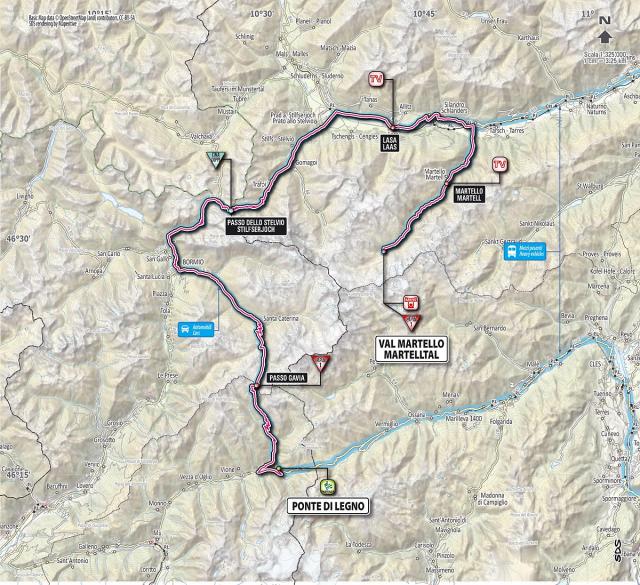


If you haven’t already booked the day off work, get your request in now. Alongside tomorrow’s stage, this will help determine the winner of the maglia rosa this year, and with the climb of the mighty Gavia coming in the opening kilometres, it will be brutal from the word go.
Next is the mighty Stelvio, which is this year’s Cima Coppi, the highest point of the race, and precedes a 20km final ascent to Val Martello Martelltal that will see battle joined in the GC, with an average gradient of 10 per cent in the final kilometre.
Local knowledge: Last year shows how the race standings can change on a stage like this. A storming solo ride up the Stelvio helped Thomas de Gendt claim a podium place in Milan; Joaquim Rodriguez rode to defend his GC lead – Ryder Hesjedal would pip him on the final day’s time trial – but the Spaniard’s efforts here saw him win the maglia rosso by one point from Mark Cavendish.
Stage 20
Saturday 25 May
Silandro/Schlanders – Tre Cime di Lavaredo 203km (high mountains)

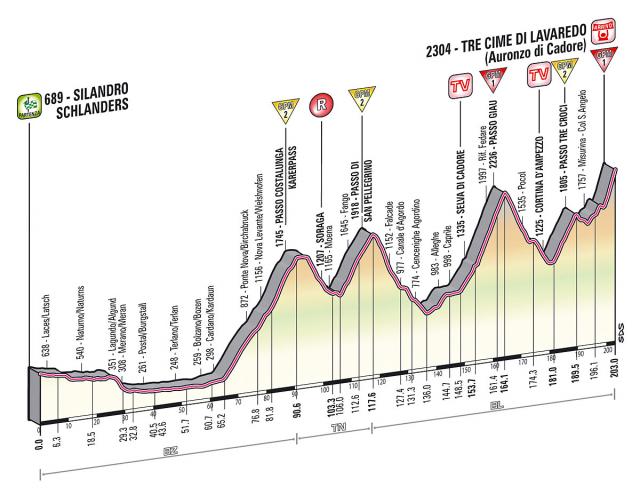
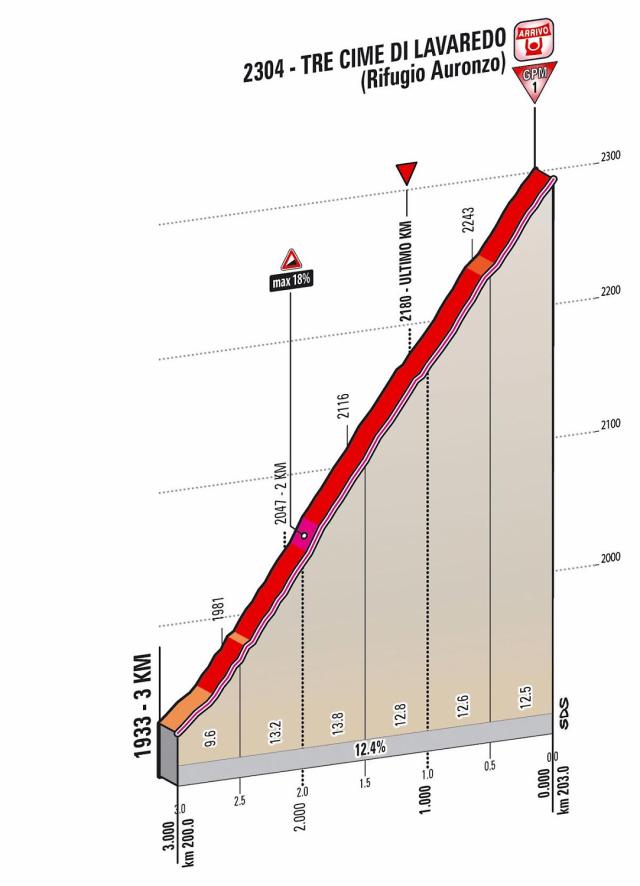
What should be a fast downhill opening third to the stage gives way to four big climbs which represent the final chance for riders to move up or down the GC, with the race closing with a sprinter-friendly stage in Brescia rather than the time trial that has featured in recent years.
The first ascent, the Passo Costaluinga, is a 25km slog, the second, the Passo di San Pellegrino shorter and not particularly taxing. The first GC moves should come on Passo Giau, and we’d expect the race to explode after it heads up the Tre Cime di Lavaredo, with ramps of up to 18 per cent in a tough last few kilometres.
Local knowledge: That final climb begins at Cortina d’Ampezzo, host of the 1956 Winter Olympics, home to some very expensive real estate and the setting for movies including For Your Eyes Only. Less glamorously, it gave its name to the Ford Cortina – publicity included the cars being driven down the bobsleigh run.
Stage 21 May
Sunday 26 May
Riese Pio X – Brescia 197km (flat)
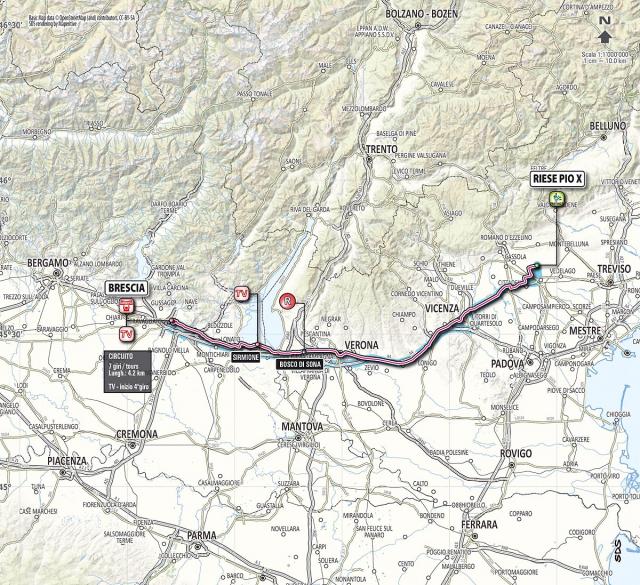
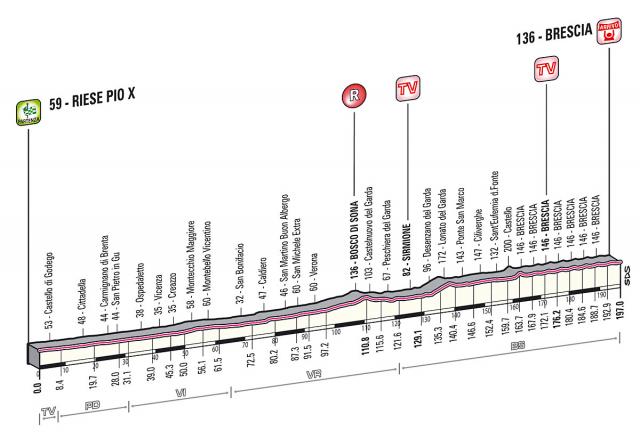
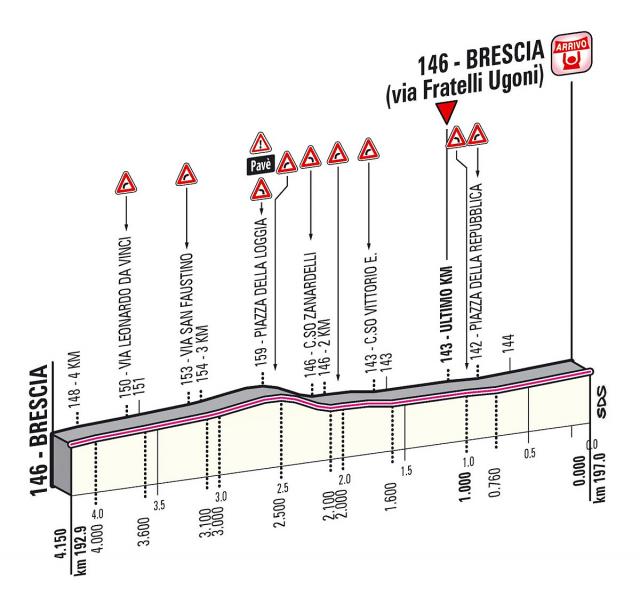
The 2013 Giro d’Italia ends, as it began, on a city circuit although unlike the opener in Naples, this one comes after more than 160km of riding that will take the race through Vicenza and Verona on the way to Brescia.
For the GC men, today’s race will have echoes of the finale of the Tour de France – their job is already done, although if time gaps are minimal that could make things interesting. How many sprinters remain to contest the win may depend on who, if any, is still in with a shout of winning the points classification.
Local knowledge: Brescia is home to one of the world’s oldest companies – firearms maker, Beretta, heading towards its 500th anniversary, and still owned by the family that founded it in 1526. Whoever is on top of the podium today, though, it won’t be Alberto Contador and his ‘pistolero’ salute…
Simon joined road.cc as news editor in 2009 and is now the site’s community editor, acting as a link between the team producing the content and our readers. A law and languages graduate, published translator and former retail analyst, he has reported on issues as diverse as cycling-related court cases, anti-doping investigations, the latest developments in the bike industry and the sport’s biggest races. Now back in London full-time after 15 years living in Oxford and Cambridge, he loves cycling along the Thames but misses having his former riding buddy, Elodie the miniature schnauzer, in the basket in front of him.
Latest Comments
- Rendel Harris 9 hours 9 min ago
Interesting, I reckon one of those would certainly give the miscreants pause for thought, if they could hear themselves think.
- ktache 9 hours 14 min ago
New cycling show on Quest this evening. So that's a bonus.
- Rendel Harris 9 hours 23 min ago
I know, but you still have to be able to measure to within 1/16 of an inch (1.5mm) and given that it's an either way measurement you have to be...
- Nick T 9 hours 45 min ago
You would notice the overall bike weight increase, but that's not what we're talking about; he specifically states that you will save effort...
- cmedred 12 hours 57 min ago
Lost control of his car doing 40 mph through a 60 mph corner? Sort of begs for some questions as to how Wan obtained a license to drive in the...
- quiff 13 hours 4 min ago
I do understand that policing resources are limited and need to be prioritised, but do we really have to wait until a KSI before they take action?...
- andystow 13 hours 43 min ago
Still no mention of a driver....
- brooksby 16 hours 25 min ago
Electric car smashed up with 'big pole' in protest against Elon Musk (Bristol Post)...
- chrisonabike 16 hours 29 min ago
Just harness it. In European countries selfish and arrogant people are demanding better cycling facilities (for their convenience) and probably...
Add new comment
7 comments
Hi Reece, there are usually links to live streams on Steephill.tv and Cyclingfans.com - though certainly on the latter they only say where exactly once the live coverage starts.
Thank you Simon. I'll keep an eye out for those links.
I think SBS are streaming everything live in OZ. Dunno if you can see their version of things:
http://www.sbs.com.au/cyclingcentral/road/news/43352/Giro%20d'Italia%20LIVE%20on%20SBS
Sky TV aren't covering this race here in NZ. Any suggestions on websites offering live streaming (in English)?
You could subscribe to EuroSport player. Their website says it's available in 70 countries, but I'm not sure if New Zealand is one of those 70.
It's £4.99 for 1 month or £2.99/month if you sign up for a year.
Or there are various sites on the internet that stream poorer quality pictures of Eurosport's coverage.
Cheers - that link should now be to the 2013 version, guess the English version of race site hadn't been updated...
Phew, that's one hell of a post. The link to the Garibaldi is for last year though. Just as well I'm at work with a really fast connection.